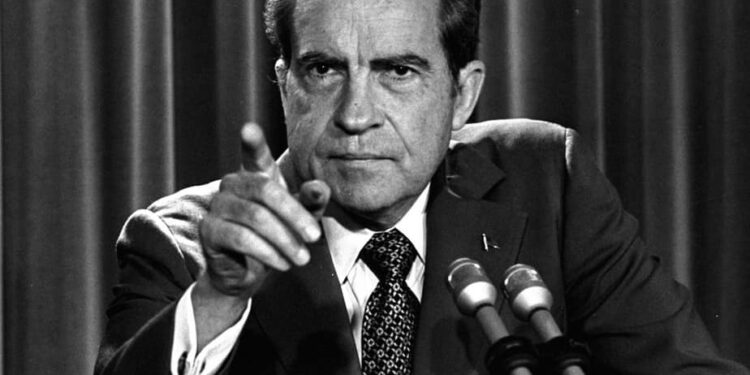The Watergate scandal remains one of the most infamous and consequential events in American political history. It unfolded during the early 1970s and resulted in the resignation of President Richard Nixon. The scandal centered around a break-in at the Democratic National Committee (DNC) headquarters in the Watergate complex in Washington, D.C., but it exposed a web of political corruption, abuse of power, and attempted cover-ups that shook the nation.
The origins of the Watergate scandal can be traced back to June 17, 1972, when five men were caught breaking into the DNC offices. These individuals, later discovered to be associated with Nixon’s reelection campaign, were attempting to wiretap phones and steal documents to gather intelligence on political opponents. The subsequent investigations revealed that this break-in was just one piece of a much larger conspiracy.
As the investigations progressed, it became clear that the Nixon administration had been involved in various illegal activities, including the creation of a secret White House unit called the “Plumbers,” tasked with stopping leaks of classified information. The Plumbers were responsible for the break-in and were connected to other illegal activities such as illegal campaign contributions and attempts to sabotage Nixon’s political opponents.
The unraveling of the scandal was accelerated by the work of journalists Bob Woodward and Carl Bernstein of The Washington Post. Through their reporting and the aid of a secret informant, known as “Deep Throat” (later revealed to be FBI Associate Director Mark Felt), Woodward and Bernstein exposed the corrupt practices of the Nixon administration. Their investigative reporting shed light on the extent of the cover-up and implicated high-ranking officials within the government.
As pressure mounted, the existence of secret White House tapes became a crucial turning point in the scandal. These tapes contained recorded conversations between Nixon and his aides, which proved crucial in determining the extent of Nixon’s involvement and knowledge of the Watergate activities. In one of the most notorious moments, an 18-and-a-half-minute gap was discovered on one of the tapes, fueling suspicions of a deliberate erasure of incriminating evidence.
Facing impeachment by the House of Representatives and a likely conviction by the Senate, Nixon announced his resignation on August 8, 1974. He became the first U.S. president to resign from office. His departure marked the culmination of the Watergate scandal but left a lasting impact on American politics. The scandal exposed the abuse of power at the highest levels of government and eroded public trust in political institutions.
The Watergate scandal prompted significant reforms in the U.S. political system. The investigation led to the establishment of legal protections for whistleblowers, campaign finance regulations, and heightened scrutiny of executive power. It served as a stark reminder of the importance of transparency, accountability, and the rule of law in a functioning democracy.
In conclusion, the Watergate scandal was a watershed moment in American history. It revealed a pattern of corruption and illegal activities within the Nixon administration that ultimately led to the downfall of a president. The scandal exposed deep flaws in the political system and highlighted the need for robust checks and balances to protect the integrity of democracy.
newshub

